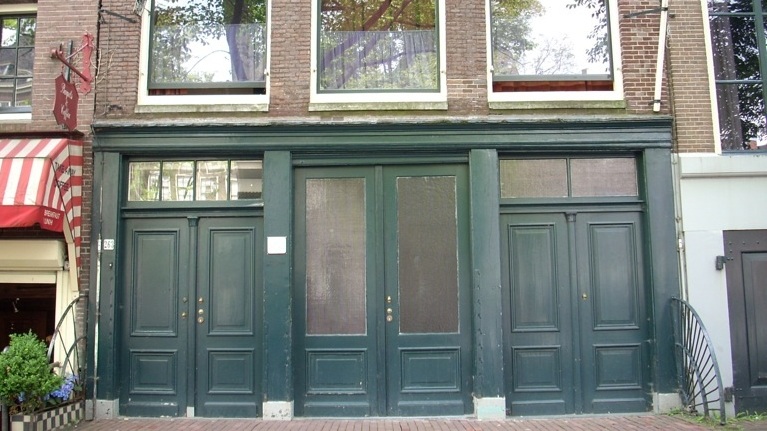This article is from EF’s Global Student Leaders Summit intern, Sarah Faure. The EF Global Student Leaders Summit Internship Program gives high school students a chance to deepen their experience at EF Summits by gaining valuable real-life skills through public speaking, journalism, social media and photography.
Prior to visiting the Anne Frank House on my trip to Amsterdam, I, like many students, had already read The Diary of a Young Girl in school. Anne Frank’s legacy is of course a powerful and emotional one, and though the book ends on a hopeful note, I remember feeling quite sad knowing what eventually happened to her. But when I visited her house, and witnessed in person how she lived each day, the feeling was quite different. Obviously I knew her story was true, but for me there’s a big disconnect between reading something versus experiencing it in real life. Being able to see, in person, the harsh reality of her life made it feel all the more real, and more importantly, more thought-provoking.
I walked through the tiny enclosures that she called her bedroom, and saw firsthand how dark it must have been in this cramped annex that blocked out the sun. The suffocating atmosphere that she was forced to call home triggered new thoughts and feelings about how difficult her life was and how brave she was throughout it.
Looking at excerpts from her diary and visually connecting them with her house not only brought the book to life, but also helped create a learning experience that went beyond words on paper. I have always been a big believer in experiential learning, and reading Anne Frank’s legacy and then seeing her house is a perfect example of how to enhance what students learn inside the classroom. Physically seeing the hardship that she went through gave me the ability to put myself in her shoes and feel a deeper connection to her story. Empathy is a human trait that is taught through experience. Empathizing with Anne reminded me how important it is to protect human rights, but also made me realize that there is an element to her story that we should all celebrate. Anne was a young woman with a strong heart that was full of fierce optimism. One of the quotes that struck me the most was when she said: “I know what I want, I have a goal, an opinion, I have a religion and love. Let me be myself and then I am satisfied. I know that I’m a woman, a woman with inward strength and plenty of courage.”
Though Anne ultimately died in a concentration camp, her goal of becoming a famous writer was achieved. Anne’s unwavering hope created a widely read story that inspired readers everywhere, and deeply ingrained in the minds of future generations a powerful narrative. So while I originally thought her story was one of sadness and loss, visiting her house helped show me that her story is full of courage and strength, and is inspiration for anyone facing adversity. While there’s still a long way to go, she accomplished more for human rights than she could have ever known. As Emma Thompson famously said, “[Anne’s] would-haves are our real possibilities. All her would-haves are our opportunities.”
Sarah Faure is a senior in high school. She lives in Columbus, Ohio and previously lived abroad in Panama. She hopes to one day combine her love for travel and passion for education by working in our country’s education system and enriching its framework with more experiential learning.
Related articles


